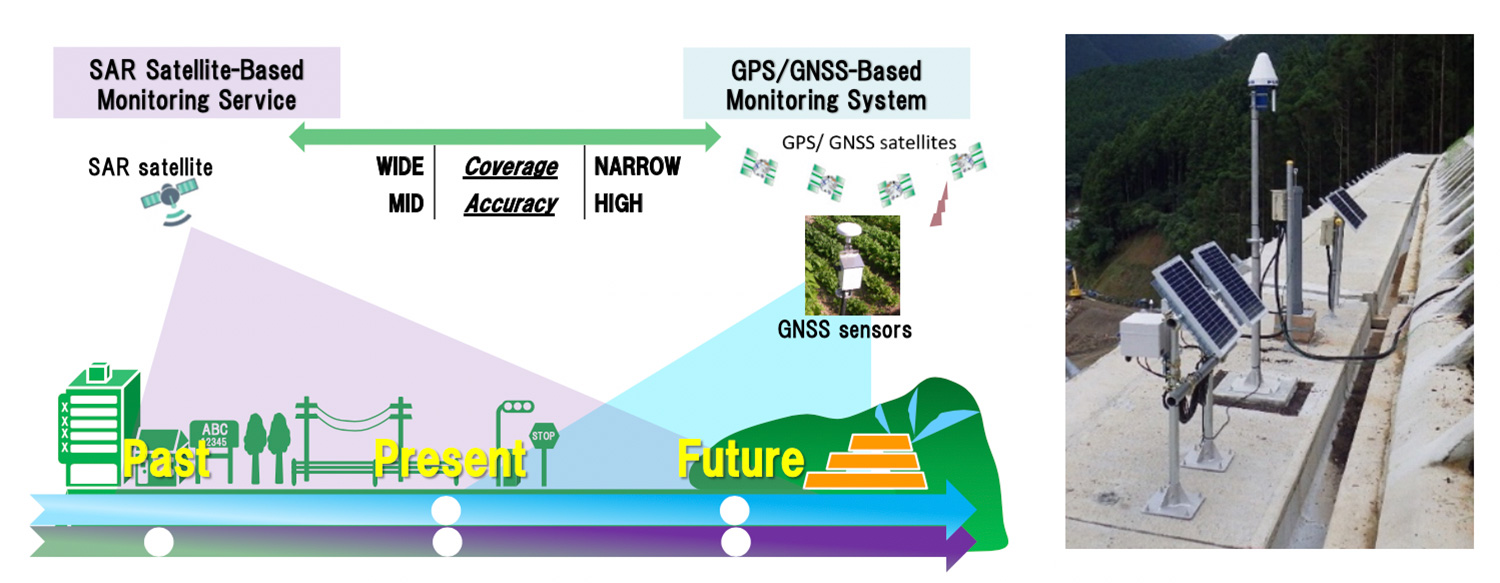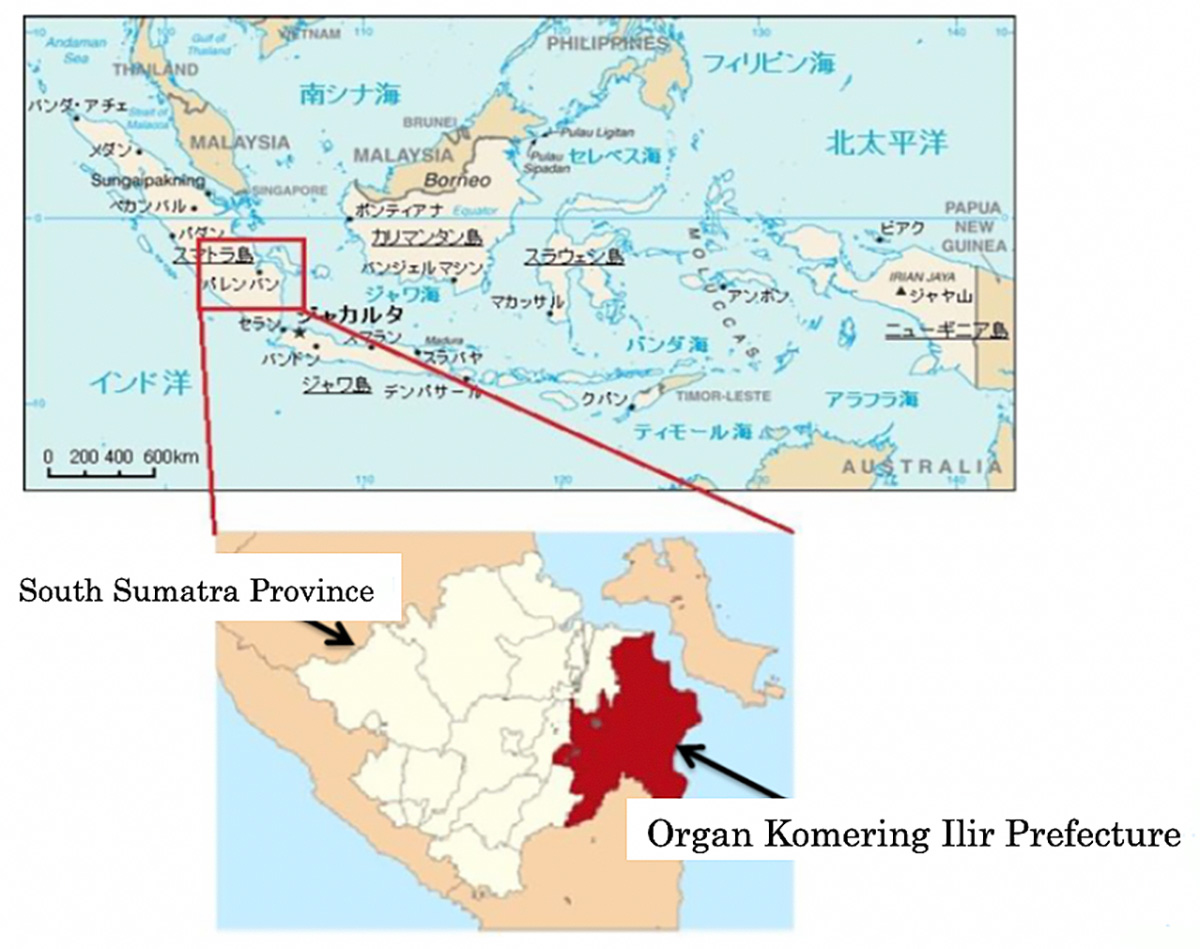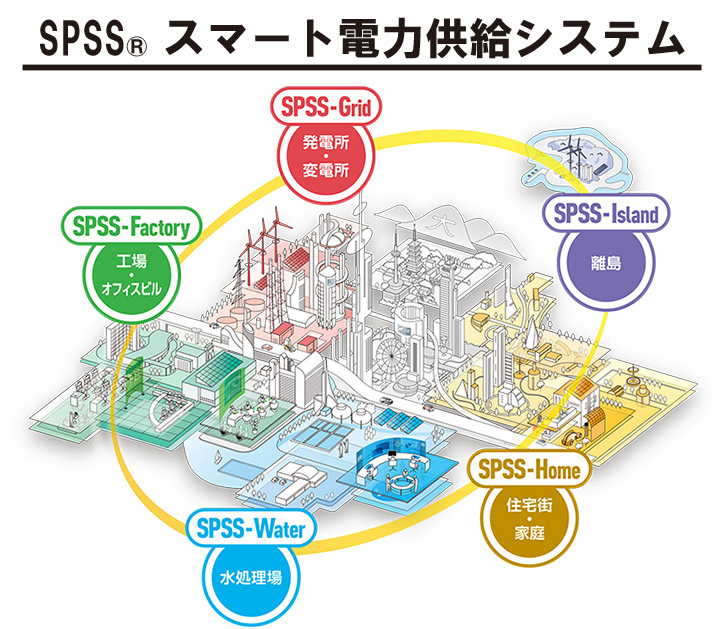Establishment of Disaster Prediction and Monitoring Systems: Challenging to Achieve Zero Fatalities because of Natural Disasters from Climate Change
Japan Asia Group Limited
Outline
We work on development of multiple disaster prediction and monitoring systems that aggregate our technologies related to disaster management such as risk assessment, training (education), sensing, monitoring, prediction, and evacuation planning. This is our challenge to contribute to the zero number of fatalities because of natural disasters from climate change by 2050.
The core of this disaster prediction and monitoring systems1 ( hereinafter “the Systems”) is the following technologies: collecting various sensors data from satellite SAR and GNSS, measurements of water level, weather, and ground displacement, then predicting disasters with AI based on those data, and aggregating and reporting damages in real time.
In the future, we will incorporate functions to assess natural disaster risks including flood, storm surge, and landslide at a target area and to provide a prompt and accurate evacuation guidance for citizen into the Systems. By doing so, we aim that the Systems can provide a series of flows for managing disaster including training (education), prediction, detection, warning and guiding evacuation.
Description
In the world, an average annual number of people who die from natural disasters such as flood, storm surge, and landslide are 70,000. The trends of climate change and global population growth indicate that the number will increase in the future.
As a company specializing in geospatial information technology and civil engineering consultant services, we have engaged in disaster risk reduction and prevention in Japan as well as overseas for more than 60 years. Those knowledge and experience enable us to develop the basis of the Systems, and some part of the technologies have been already commercialized.
Specifically, we have developed the followings;
1) The system for assessing disaster risks at a target area utilizes the geological data obtained from measurements of ground and seabed topographies by aircraft, drones, automobiles, and ships, and analyzes them with geospatial analysis technology.
2) The system provides disaster countermeasures training and information such as locations of damages and evacuation routes in real time with citizens, companies and governmental organizations in Japan and overseas2.
3) The system provides information of storm surge in real time with information of typhoon and hurricane. This system applies the technology of real-time tsunami inundation and damage forecasting3 that integrates seismic information with tsunami simulation technology.
We also have owed a system of 24-hour, 365-days manned monitoring system that reports and evaluates the occurrence of displacement and its factors. This system measures changes in the ground, slopes and structures such as dams and embankments with sensors including satellite SAR, surveillance cameras, and GNSS, as well as aggregates other sensing data from measurements of water level and underground displacement in real time.
The Systems are currently under a rapid development, and incrementally deployed once completed. However, the expected challenges are the long development time and huge budget for the deployment of sensors at scale and the completion of the disaster forecast technology.
We will develop the affordable and accurate sensing technologies with a collaboration with industry, government, and academia in Japan and overseas in order to build a sensor network that can cover the globe.
Furthermore, we will improve accuracy of disaster prediction and simulation technologies using these sensor data. In addition to this, early notification of the possibility of a disaster to everyone can promote early evacuation and disaster countermeasures in advance, and it contributes to creating a world in which the number of fatalities will be zero.
Supplementary information
This is a challenge by its subsidiary, Kokusai Kogyo Co.
1: http://www.shamen-net.com/index.html
2: https://biz.kkc.co.jp/software/dp/bousai/
3: https://drive.google.com/file/d/1I2-Bn8-YE3hfWOEOK8IJbb2mgfLiXXwr/view
Other Innovation Challenges
Technological Innovation for Realization and Expansion of REDD+ Business
Japan Asia Group Limited
Similar Innovation Challenges
Achieving net zero carbon emissions from paint finishing processes
Taikisha Ltd.
Activities for reducing GHG of business operations in Nissin Electric Group
Nissin Electric Co., Ltd.










-1人工光合成技術.jpg?id=2&tid=759&imageNumber=1)